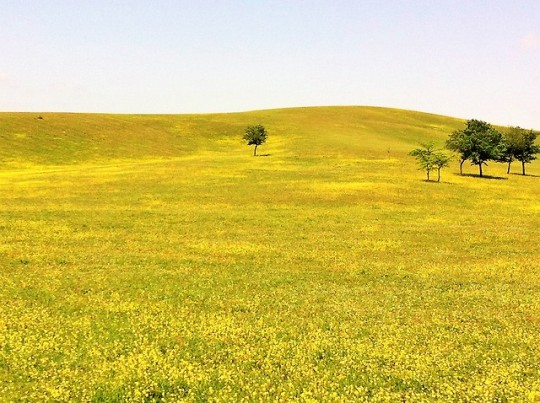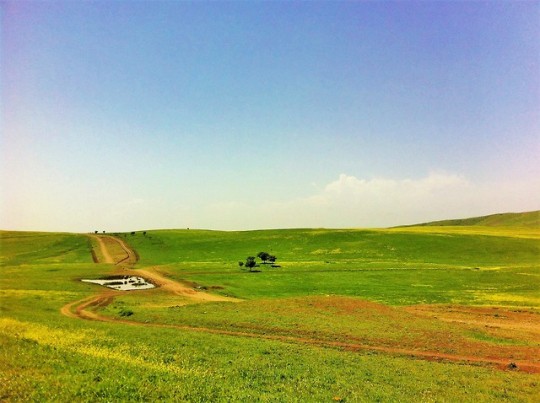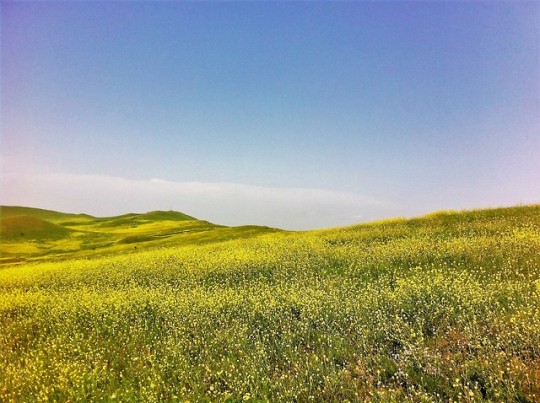#gareja
Link
Colored Desert and monastery complex in the Caves. Near the border of Azerbaidjan.
#davidgareja#garedja#gareja#desert#colored#history#trip#roadtrip#travel#Georgia#tbilisi#things to do in tbilisi#privatetour#summer
0 notes
Text
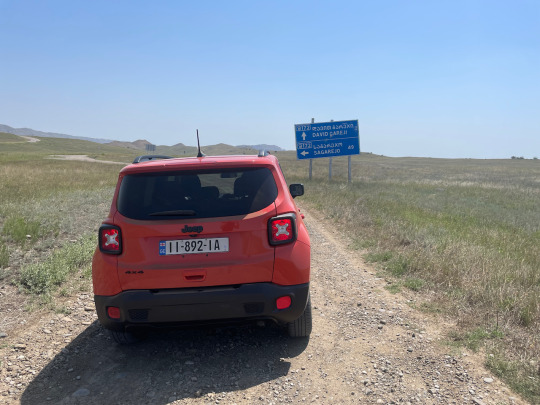
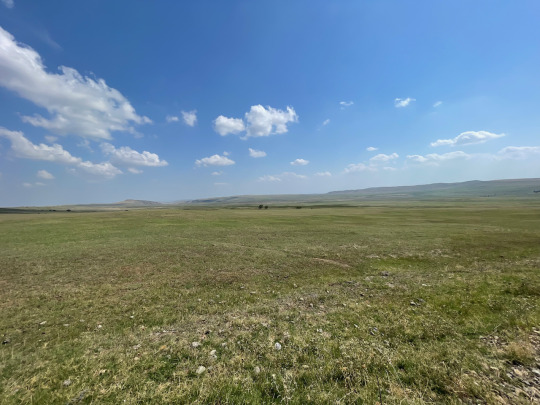





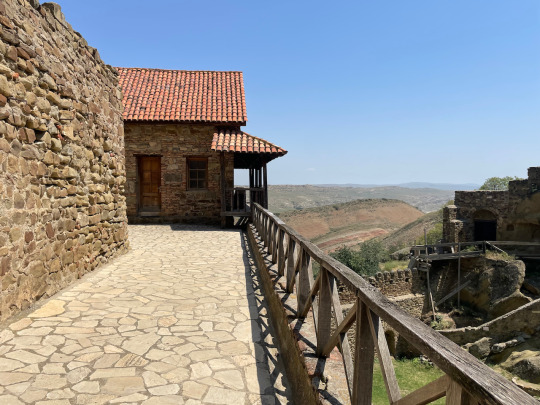





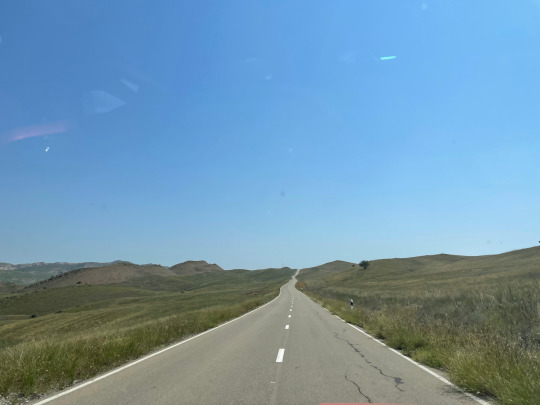

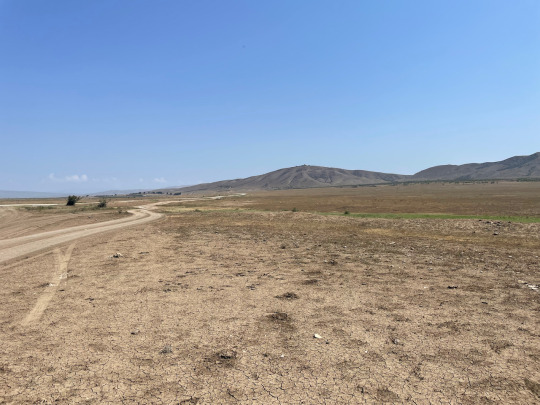
Wynajmując samochód, wiedzieliśmy dokładnie na co się piszemy. Wiedzieliśmy, że to musi być 4x4 w dobrym stanie. Dziś skorzystaliśmy z pełni jego możliwości. Do Dawid Gareja wiodą dwie drogi, my skorzystaliśmy z tej trudniejszej, przez step, wzdłuż Azerskiej granicy. Z rozpadlinami, koleinami, wertepami. Drogi gdzie musieliśmy się wycofywać po złych decyzjach, czasem ledwie się toczyć, czasem jechać na pełnym gazie aby pokonać górę.
A cudowny klasztor Dawid Gareja był tylko ukoronowaniem drogi. Genialnym, liczącym sobie 1500 lat zabytkiem, którego przez Azersko-Gruzińską dysputę nie da się zwiedzić w całości. Mimo politycznych problemów, nikt nie zabroni nam podróży przez step, podglądania koni pasących się na równinach, podziwiania tęczowych wzgórz.
0 notes
Text
David Gareja monastery, Kakheti region of Eastern Georgia
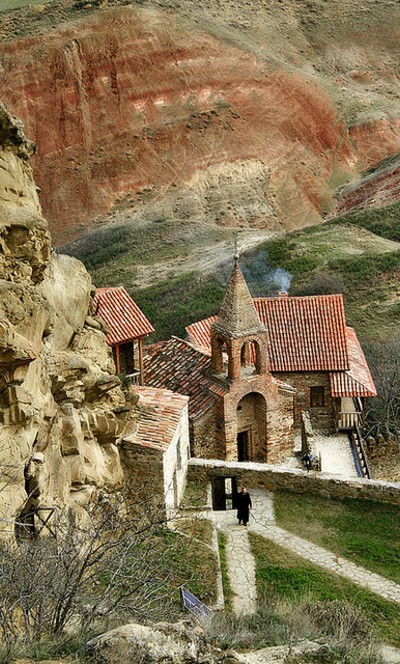
0 notes
Text

Dear ,Jignesh Gareja, *Congratulation on receiving your Work Visa approval for Poland* 🇵🇱 through AADESH GROUP. We wish you all the best for your future .
#VisaConsultant #polandwork #Polish #futurebright #work #fly #Poland🇵🇱
#WorkVisa #Poland #europe #Aadesh #AADESHGROUP #porbandar #Gujarat #india
OUR SERVICES
✔️ Passport / Visa Assistance
✔️ International & Domestic
✔️ Air Ticket / Holiday Packages / Hotel Booking
✔️Student Visa consulting & visitor visa consulting around the world
✔️ IELTS Training
✔️ Education loan for study abroad
✔️ Document Apostille and attestation
✔️ Overseas Travel Insurance
✔️ Life & General Insurance
✔️ Foreign Exchange
✔️ Online Railway booking
✔️ International driving licence
✔️ All documents Improvement & addition.
All Types of Travel solution
Prakash Odedra
📱+91-97255-32898
Thanks and Regards
AADESH GROUP.
*Choose the best*
1 note
·
View note
Text

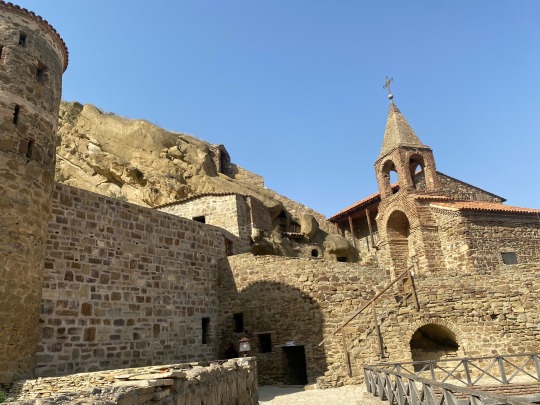
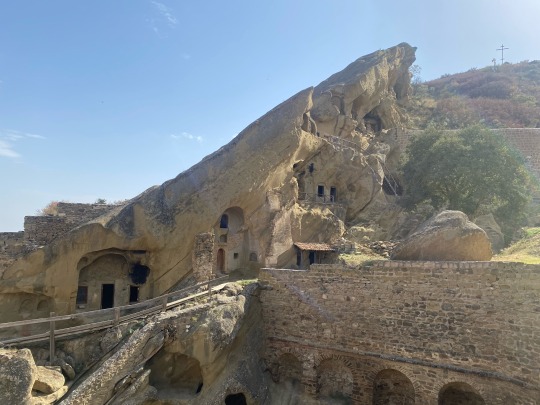
Davit Gareja. Ancient Monastary built into the caves. Unfortunately we couldn’t see the frescos because of border dispute with Azerbaijan.
0 notes
Photo

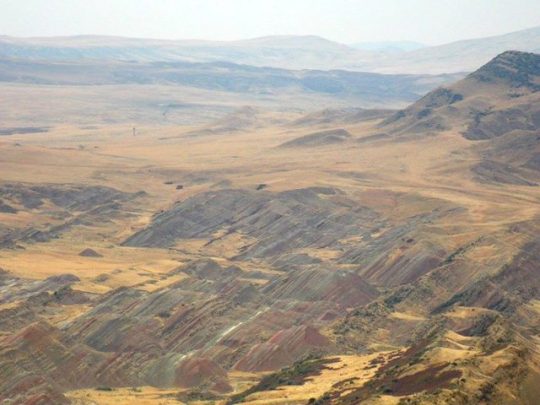
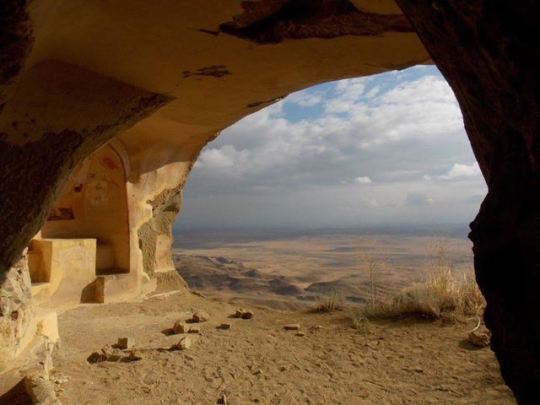
Georgia, David Gareja
Tamta Dolidze photography
#Tamta Dolidze#Georgia#Davit Gareja#rocks#Cave Monastery#photo#photography#Kakheti#nature#fresco#art
26 notes
·
View notes
Photo
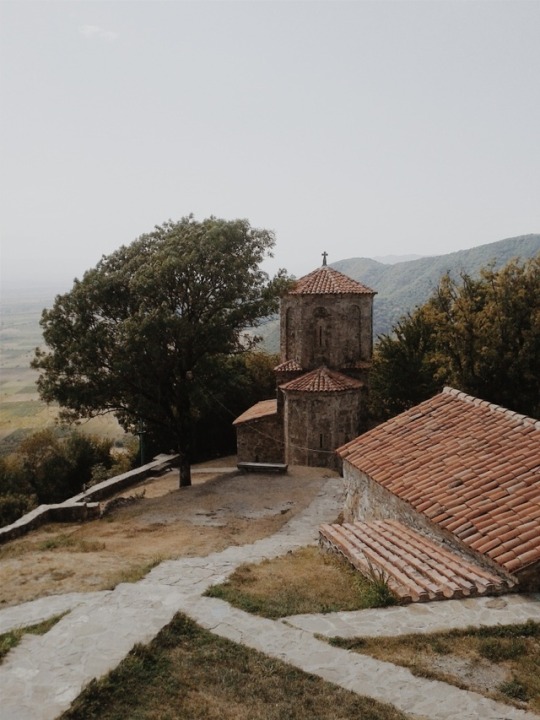
Georgia, Kakheti, David Gareja monastery
by Marcella Foccardi
#georgia#kakheti#david gareja monastery#monastery#landscape#nature#travel#beautiful#scenery#photography#mountains#building#architecture
10 notes
·
View notes
Text
Georgia: Yup, That Georgia
Georgia: Yup, That Georgia
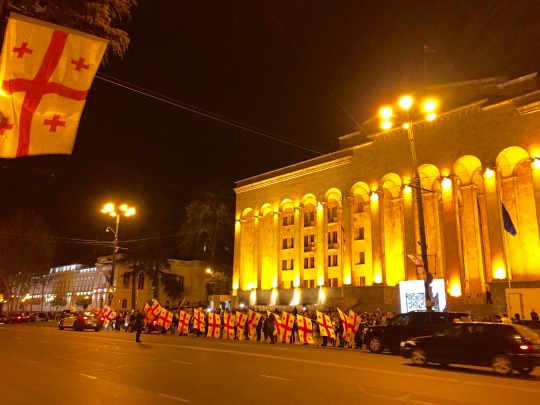
Georgia is a crossroads nation of almost 4 million people that sits between Russia, the Stans, Iran and Turkey and is a branch of the Silk Road. Georgia was founded as a single independent kingdom in the 12-13th centuries, which is often referred to as the Golden Age. Not many countries get to have an epic chivalric poem of 6,648 lines that defines their country’s heroic destiny, but Georgia…
View On WordPress
0 notes
Photo
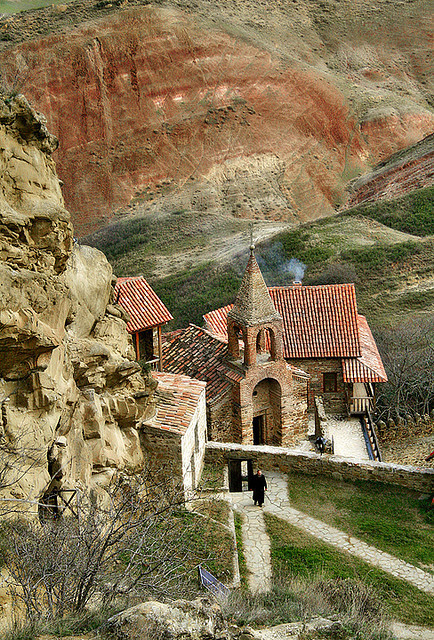
David Gareja monastery, Kakheti region of Eastern Georgia
8 notes
·
View notes
Photo

Davit Gareja Monastery
Republic of Georgia
#photograph#photography#photographers#travel photography#travel#davit gareja#monastery#nature#landscape#georgia#photo#art
1 note
·
View note
Text
Ari Rayo Paskah
Kapatang adolah ari rayo paskah. Ati iko maraso indak tantu do. Adonyo Panyakik Corona-Sambilan baleh iko , kasado tampek ditutuik sadonyo. Pambatehan Sosial iko mambuek kito indak bebas lai. Kapatang sajo , den dangan kawan kawan nan lamo binguang bana mancari tampek bakumpua di kota. Polisi juo sambuah nan patroli, duo-tigo truk nan taliek. Sabananyo Ari raya paskah samustinyo bakumpua di gareja, Tapi sayang saribu sayang , Kali iko Indak dapek do batamu Tuhan Yesus sacara langsuang di gareja.
Tampek Karehjo sepi , indak ramai do saparti dulu. Wabah panyakek iko memang mambuek kito mangarati ka paidokan nan dialami pangikuik Yesus. kutiko digantuang inyo di kayu salib. Ba'a indak ? musti binguang dibueknyo pangikuik-pangikuik tu. Nan tiok ari dikawani gurunyo , Kutiko binguang ado manjawek, pokoknyo ado nan salalu bari arahan. Saparti Kito sadonyo nan batambah jauah dari Tuhan. Banyak nan Jarang Bana pai ka gareja. Ado nan bilang
"taun lalu indak ka gareja do , Taun iko musti pai ka gareja". sanan kini dek ado Corona , Inyo indak bisa do ka gareja. dan sarupo jo kito iko, Lah ilang kesempatanko bakampua jo kawan kawan di gareja. Tapi Tuhan salalu ado dimapun kito barado.
1 note
·
View note
Text
This is the last post in a series! You can start from the beginning in Kutaisi here, or browse the whole Adventure in reverse order using the tag here. And as ever, click the images for full-size versions.
The 12th century Tsunda church: locked to visitors, with an alcove by its hearth stained by the soot of centuries of votive candles. I wonder how many have burned there?
Breakfast was a truly scrumptious mix of local fruits, veg and preserves, cheeses, fresh bread, and good black tea (with milk, even!) Unfortunately Arpi was totally ruined with sickness and couldn’t eat, so half – well, a third – of it went back uneaten. I scrubbed the transport arrangements to Batumi, cancelled the nice-looking airbnb in Batumi, agreed another night with our lovely hosts, and asked them if the offer to drive me around the ancient monastery and fortress complexes was still open. It was. So myself, the guesthouse owner and the 12-year-old daughter went off on a ROAD TRIP.
Southeast of Akhaltsikhe, on the way to the Turkish border, the Kura has eaten deep into the stone of the Caucasus mountains.* There are flat valley floors here, rectangles of green and yellow like elongated chequerboards, but it’s mostly a rugged landscape of high hills and scree. Huge building works were going on near the road, vast concrete pilings and silver pipes reaching down from mountaintops; we discussed what was going on, eventually reached a shared understanding of pumped storage. Bright sun beat down; the constant hiss of the crickets mixed with the rush of the airstream, changing in tone as we jinked around crags and big holes in the road. There were more cows about than cars, and it was difficult to get a sense of how busy this place must have been in its heyday. But the relics of a past Georgia were everywhere: a beacon-tower from the time of Tamar; a church one thousand years old; a fort that had once been sacked by Alexander.
“There was a market here for selling people. Is that right?”
“Slaves?”
“Yes. A slave market.”
Past the confluence with the Paravani river, the land takes on a different character. Like Dartmoor, evidence of sustained, intense human activity is just beneath the surface everywhere: step-farm wine terraces abandoned for centuries; cliffs riddled with mysterious, too-regular holes; remote domes perched on crags; the high, remote, romantic silhouette of the earthquake-slighted Tmogvi fortress, its ruined towers merging into the mountainside. Eventually, most dramatically of all, we came to the monastic cave-city of Vardzia.
https://brosencrantz.files.wordpress.com/2018/07/20180701_102951.mp4
Dramatic Vardzia Reveal. But if that doesn’t work for you, there’s a photo here.
From a distance, Vardzia looks like a termite mound with the side kicked off, if termites could carve out entire mountains. A quake in 1283 did terrible damage, and the whole site was abandoned after an Ottoman invasion a few centuries later. Around three hundred chambers survive of a supposed six thousand. The guidebook at the guesthouse said that it only has four levels now, from an original eight; the audioguide I rented (in good, slightly breathless English) contended that the original number had been nineteen. Much of the city’s structure can only be guessed at, but if you start from the idea of a well defended fortress-monastery dug into the hillside, with a supporting town in its skirts, the picture comes together.
I hiked up the hillside to the base of the complex, rather than wait for a minibus; there were a handful of other tourists there, some American, some Russian. The exposed architecture is weathered to abstraction, and I needed the guide to explain most of the chambers. There were buried stables, refectory chambers similar to those at David Gareja, rooms with huge ceramic wine vessels buried in the floor. A belfry with martens nesting in its carved eaves is one of the rare parts of Vardzia which was actually meant to be above ground. Deep within the mountain, accessed only by a hundred yards of bent-double crouch-walking, a clear spring next to a floodlit chapel gave a real, rare sense of serenity. The audioguide was filled with explanations of sneaky ways the locals would wall themselves off in times of trouble (with only one main entrance and exit to the city). And wonderfully, the core holy site and the most artistically important part of the whole complex has survived very well: the Church of the Dormition, with its ancient but decently-preserved paintings of angels, saints and Tamar the Great.
Tamar occupies a similar position in the Georgian national pantheon as Elizabeth I does in the English: a much-celebrated queen** ruling over a golden age of cultural achievement (with her chronicler Shota Rustaveli an independently-legendary writer of Shakespearean renown***), their reputations shining all the more brightly owing to reigns bookended by periods of darkness and horror. Her depiction at Vardzia is the oldest and most famous, dateable very precisely to within a year of 1185. In a fantastically detailed royal costume, she’s moon-faced and tough-looking: narrow eyes, strong brows and a pursed mouth might indicate character, might depict courtly formality, might be the 1180s ideal female beauty, or might just be the result of an artist used to painting human faces in a martyrdom context. A long, winding, dusty stair took me back to the valley floor; my Georgian guides, who had seen it all before, were chilling by the river. We refilled our water bottles at a fountain, and rode on.
The Vanis Kvabebi complex (“Vani’s caves”) is if anything even more interesting than Vardzia, because it’s easier to understand how it worked in its golden age. A triangular settlement, two sides defined by a deep V-shaped notch in the canyon, one a massive fortification still impressive eight hundred years later. The open-air buildings are mostly now outlines and wildflowers, but the cave dwellings remain in decent nick. A segment of the dome of a fallen church is visible above an altar; in the caves, ancient wine-vessels cut ceramic-lined circles in the floor. Above it all, a tiny dome perches like an eagle’s nest (see if you can find it in the pictures), supposedly lined with ancient calligraphy. My guide was eager to show it off, and borrowed a key from a bearded monk who seemed to appear from nowhere, but a long, steep, rickety pathway and a makeshift ladder later we were wiggling it without effect in a lock. Maybe the lock needed oiling; maybe the monk didn’t like our faces.
Last point on the journey back was Khertvisi Fortress, which stands where the fairly dramatic Paravani River meets the extremely dramatic Kura. Legend says Alexander stormed a predecessor of this castle – plausible, it’s a supremely defensible point even by the very high local standards. As with most of these places, imagination is required regarding the contents, but the keep, the towers and the gingerbread-man-hand crenellations all stand on their own, huge and impressive.
We came back into Akhaltsikhe via a moneychanger – an interesting thing I’ve learned on travels into similar economies is that you get better exchange rates in the back of beyond than you do in the big cities – and I tried, with only partial success, to pay my hosts properly for the wonderful journey. I can’t remember what trifling amount they eventually accepted, but it wasn’t enough. I roused a still-ill Arpi, wrapped up our belongings, and we headed for Kutaisi and the long journey home.
* One plausible etymology for the river’s Georgian name is “gnaw”, as in “gnaws through mountains”.
** There are lots of modern English-language references to Tamar as “King” rather than “Queen”, and half-baked suggestions that this is a unique honour or that she somehow had a masculine kingliness. But Georgian doesn’t have grammatical gender, so her title is genderless – “monarch” or “sovereign” would be more appropriate.
*** If you really want to stretch the point, The Faerie Queen and The Knight in the Panther’s Skin are also roughly equivalent, being famous era-defining literary works which are also thinly veiled political allegories about the queen. But that’s a bit tortuous.
Georgia 2018
Good morning, Kutaisi! – Museums and wine – Chiatura from above – Pioneers’ Palace, Gori – Tbilisi – David Gareja – Akhaltsikhe – Vardzia
the hall of the mountain queen This is the last post in a series! You can start from the beginning in Kutaisi…
1 note
·
View note
Photo

David Gareja monastery, Kakheti region of Eastern Georgia
1 note
·
View note
Text
Lagu Rohani Ambon - Lonceng Gareja - Ade - Flo - Bitha Voice's
Lagu Rohani Ambon – Lonceng Gareja – Ade – Flo – Bitha Voice’s
Klik Subscribe/ langganan untuk mendapatkan informasi Video Lagu Rohani Ambon terbaru. Silahkan Kunjungi Juga: FB: http://tinyurl.com/y7bk23co Twitter: http://tinyurl.com/y8arh4ve Web: http://tinyurl.com/ybn5wb9k YouTube: http://tinyurl.com/z9qk4km Ilustrasi Khotbah Pdt. : http://tinyurl.com/ycehmbq9 Ekspresi Anak :…
View On WordPress
#Ade - Flo - Bitha#Ambon#Asli#bambang nursena#cerita lucu#Erastus sabdono#eta terangkanlah#Funny Videos#Gareja#gilbert lumoindong#Ilustrasi Khotbah#ilustrasi lucu#kejadian#khotbah lucu#khotbah terbaru#kocak ngakak#lagu rohani#Lonceng#Lonceng Gareja#mel atok#mongol stess#Philip mantofa#Sakit Perut#Sampai#Stand up comedy#tertawa#trending#Video humor#video lucu#Voice
0 notes

